This article was co-authored by Chris M. Matsko, MD. Dr. Chris M. Matsko is a retired physician based in Pittsburgh, Pennsylvania. With over 25 years of medical research experience, Dr. Matsko was awarded the Pittsburgh Cornell University Leadership Award for Excellence. He holds a BS in Nutritional Science from Cornell University and an MD from the Temple University School of Medicine in 2007. Dr. Matsko earned a Research Writing Certification from the American Medical Writers Association (AMWA) in 2016 and a Medical Writing & Editing Certification from the University of Chicago in 2017.
There are 8 references cited in this article, which can be found at the bottom of the page.
wikiHow marks an article as reader-approved once it receives enough positive feedback. This article received 16 testimonials and 89% of readers who voted found it helpful, earning it our reader-approved status.
This article has been viewed 955,457 times.
If you get carsick, you most likely dread every single extended road trip. It can negatively affect your commute or fun activities with friends. Car sickness is just one kind of motion sickness (or kinetosis) that some experience when they're riding in an automobile. Dizziness, fatigue, cold sweats, and nausea are common symptoms of car sickness. So how do you go about preventing car sickness in the first place? Use some simple tips and tricks to enjoy the ride, sickness-free.
Steps
Changing the Way You Travel
-
1Sit in the front seat of a car. Doctors believe that motion sickness is caused by a conflict between what your eyes are seeing and how your body is interpreting the motion of a vehicle, which uses signals originating in your inner ear to sense balance.[1] For example, if your eyes see the car seat in front of you but your body feels the curves and speed of the road, your inner ear might be thrown off. This then leads to the nausea and dizziness so typical of carsickness.[2] To avoid this feeling, try to have your eyes focused on the road in front of you so that your eyes and your body can interpret the same information. By sitting in the front seat, you are much less likely to experience a discrepancy between what you see and how your body interprets motion.
- Driving the car yourself has the added benefit of giving you something to focus on, which can distract you from your sickness.[3]
-
2Focus your eyes on the horizon. Having a fixed visual point in front of you will help keep your eyes, inner ear, and nerves in check. Look out the front window and find a stable point at the horizon, somewhere in the distance. This point could be a mountain, a tree, a building, or simply a point in space. Concentrate all your visual attention at this point. Hold your gaze there even if there are bumps, curves, and hills. Resist the temptation to look out the side window: only look out the front window.
- If you are in control of the vehicle, be sure that you are paying attention to the road and surrounding cars as well as to the horizon in front of you.
Advertisement -
3Keep cool. Having a cool, well-ventilated atmosphere can help mitigate car sickness as well as alleviate symptoms such as sweating and nausea. If you can, crack the car windows open to create a cross breeze. Alternatively, you can turn on the car's air conditioning. Point the air vents at your face to get the most benefit.
- Ventilation can also help reduce food odors in the car. Car sickness can be exacerbated by strong food odors.
-
4Stabilize your head. It can sometimes be hard to keep your eyes focused on a single point when you are in a bouncing, bumpy car. To stabilize your vision, make sure your head is stabilized too. Rest it against the headrest behind you to keep it still. A neck pillow might also help you keep your head — and therefore your vision — steady.
-
5Take frequent breaks. Go outside to stretch your legs. Sit on a bench or under a tree and take some deep breaths in through your mouth to help relax. This is especially important during journeys that involve a long distance of curvy roads. Not only does stopping frequently help alleviate car sickness, but it is also good for the driver to take a break every once in a while. Resume driving when you feel alert and when your dizziness and nausea pass.
-
6Try to nap. Sleeping through your motion sickness can also work wonders for car passengers. You won't be aware of the differences between your visual information and the signals your body is sending because your eyes will be closed. Many people find that sleeping is the best way to get through a long car trip without motion sickness.
- If you have trouble napping in the car, consider using a form of sleep aid. If you use a sleep aid, however, you have to be certain that you will not be needed to drive at any point during the trip.
-
7Focus on something else. Distractions are a great way to decrease car sickness, especially for children or those who have to ride in the backseat. Take your mind off of your dizziness and nausea by listening to music, singing, or playing a game of 20 questions with your fellow passengers.[4]
-
8Put down the books, phones, and devices. Car sickness is worsened when you are concentrating on a visual object that is within the car instead of outside the car. Staring at a book, a phone game, a kindle, or a tablet can heighten the mismatch between your eyes and the rest of your body. To prevent car sickness, make sure the only objects you focus your eyes on are outside of the car, on the horizon in front of you.[5]
- There are many people who experience car sickness only when reading in the car. Make sure this doesn't happen to you!
- Audio books, the car radio, and CDs are a great way to be entertained in the car without causing car sickness.
-
9Breathe deeply. Car sickness is made worse by feelings of anxiety and nervousness. Relaxation techniques such as slow, deliberate breathing exercises can help you slow your heart rate and relax your body, making it less likely that you will experience symptoms of motion sickness.
-
10Avoid bumpy roads. The smoother your ride, the less likely you are to experience car sickness. Ways to smooth out your ride include driving on highways instead of stop-and-go city streets and making sure your car has up-to-date shocks. You can also take care in your route planning to avoid hilly or mountainous roads by driving around particularly hilly regions. Aim for as flat a ride as possible.
- Driving at off-peak times can also help prevent getting stuck in stop-and-go traffic.
-
11Buy a motion sickness wrist band. A motion sickness wrist band provides gentle, constant pressure to your forearm, about one inch from your wrist joint. This pressure is supposed to help alleviate the nausea caused by motion sickness. While anti-nausea wristbands haven't been scientifically proven to be useful, they are relatively cheap and have no negative side effects. You can consider giving it a try to see if it happens to work for you.[6]
- If you do not own a motion sickness wrist band, you can apply gentle pressure on your forearm (between the two tendons) about 3 centimeter (1 in) (roughly an inch) or so back from the wrist joint.
-
12Consider alternative forms of transportation. Some people who experience car sickness also experience motion sickness in other vehicles, such as trains, buses, and planes. Some people, however, only experience motion sickness in the car. Trains, buses, and planes might be viable forms of transit. These other vehicles may be a better option because they are able to provide a smoother ride, are less likely to confuse your eyes, and allow you to sit higher up in your seat.
- It is helpful to find the most stable seats on these alternative forms of transit. Make sure your seat is facing the direction in which you are traveling (do not choose a backwards-facing seat); sit towards the front of trains and buses; choose a wing seat on an airplane. You are less likely to be bounced around in these seats.
- For shorter distances, walking or biking might allow you to avoid the car altogether.
Making Dietary Changes
-
1Avoid greasy meals and alcohol before trips. Greasy foods make your body primed to experience nausea.[7] And alcohol can cause hangover symptoms that can worsen car sickness, such as dizziness, headache, nausea, and sweating. If you know you will have to ride in a car soon, stay away from high-fat meals and alcoholic beverages to avoid car sickness.
-
2Eat frequent, light meals. Heavy meals can make it easier to experience feelings of nausea. If you are riding in a car--especially on a long trip--stick to light, healthy, low-fat, small meals that you eat more frequently. If you can find a meal that is low in fat but high in protein, that is the ideal food to prevent car sickness.
- For example, do not eat a hamburger on a road trip. Instead, buy a salad with grilled chicken. Do not drink a milkshake on a road trip. Instead, drink a lowfat yogurt smoothie with added protein powder.
-
3Have bland, floury snacks in the car. Plain, bland, flavorless snacks can help settle a turbulent stomach. Snacks such as dry toast, saltines, and pretzels can help absorb stomach acids and make a stomach feel calmer. They are also a good way to ease your hunger pangs without causing indigestion.
- These snacks also do not have much of an odor, which is helpful because strong food odors and flavors can exacerbate car sickness.
-
4Stay hydrated. Dehydration can exacerbate the symptoms of car sickness. Be sure that you drink plenty of water before and during a car trip in order to avoid feelings of sickness.[8] While water is the best way to stay hydrated, a flavored beverage might help serve as a needed distraction from your feelings of dizziness or nausea: feel free to treat yourself to a soda without added caffeine, such as ginger ale or Sprite.
- High-protein beverages have been shown to help reduce nausea as well.
-
5Consume plenty of ginger. Ginger has been shown to help mitigate car sickness and other forms of motion sickness. You can eat (or drink) ginger in many different forms. There are ginger lollipops, ginger lozenges, ginger teas, ginger sodas, ginger pills, candied ginger, and ginger cookies.[9] Any of these will help settle your stomach. Just be sure that your snack is made from actual ginger--not imitation flavoring.
- Ask your doctor about whether ginger is safe for you to take. It is possible that ginger can interfere with certain medications.
-
6Keep a supply of mints and gum at hand. Peppermint, like ginger, is a natural remedy for nausea. Mint gums and candies also help your body produce more saliva, which can neutralize stomach acids. Moreover, these flavors can serve as welcome distractions when you can think about nothing other than your symptoms.[10] Suck on a peppermint candy or chew some mint gum to help calm your stomach and focus on something else.
Using Medical Treatments
-
1Talk to your doctor about car sickness. Most cases of car sickness can be dealt with using lifestyle changes and home remedies. However, sometimes car sickness can get in the way of your job or everyday functioning. In this case, you should talk to your doctor about possible medical interventions, such as over-the-counter or prescription medication.
- You should also talk to your doctor if you (or your child) experience symptoms well after you have gotten out of the car, severe headache, difficulty hearing or seeing, and difficulty walking. These could indicate issues that are more serious than regular car sickness.[11]
- Susceptibility to car sickness may be related to age, race, sex, hormone factors, sensory illness, and migraines. Ask your doctor if you have an elevated risk for motion sickness.[12]
-
2Take antihistamines 30 – 60 minutes before entering a car. There are over-the-counter and prescription drugs that are effective against car sickness. Most of them contain dimenhydrinate (aka dramamine) or meclizine.Some popular brands are Dramamine and Bonine/Antivert. Some of these are available as patches and can be particularly helpful because of their ability to release the medicine over time. Antihistamines can prevent nausea caused by motion sickness by dulling the inner ear's motion sensors. In order to work properly, you should take the medication 30-60 minutes before you begin your car trip.[13]
- Look into the side effects before using any of these drugs (especially if you're driving), and ask your doctor just in case. Antihistamines can make you feel sleepy and affect your ability to operate machinery.[14]
-
3Ask your doctor for a scopolamine prescription. Scopolamine is only safe for adult use--not for child use.[15] It is prescription-only and is worn as a patch behind the ear. You must wear it 4 hours before your traveling commences. While its side effects can be severe (blurred vision and dry mouth), it is very effective at combating nausea caused by motion sickness. Talk to your doctor about whether it might be a good option for you.
Expert Q&A
-
QuestionCan perfumes used in a car cause car sickness?
 Zora Degrandpre, NDDr. Zora Degrandpre is a Natural Health Doctor and Licensed Naturopathic Physician in Vancouver, Washington. She is a grant reviewer for the National Institutes of Health and the National Center for Complementary and Alternative Medicine. She received her ND from the National College of Natural Medicine in 2007.
Zora Degrandpre, NDDr. Zora Degrandpre is a Natural Health Doctor and Licensed Naturopathic Physician in Vancouver, Washington. She is a grant reviewer for the National Institutes of Health and the National Center for Complementary and Alternative Medicine. She received her ND from the National College of Natural Medicine in 2007.
Natural Health Doctor Yes, there are fragrances that can cause nausea in some people. There are also many perfumes with a number of chemicals that can cause nausea or car sickness in sensitive people.
Yes, there are fragrances that can cause nausea in some people. There are also many perfumes with a number of chemicals that can cause nausea or car sickness in sensitive people. -
QuestionIs it normal for me to have asthma attacks when I get carsick?
 Zora Degrandpre, NDDr. Zora Degrandpre is a Natural Health Doctor and Licensed Naturopathic Physician in Vancouver, Washington. She is a grant reviewer for the National Institutes of Health and the National Center for Complementary and Alternative Medicine. She received her ND from the National College of Natural Medicine in 2007.
Zora Degrandpre, NDDr. Zora Degrandpre is a Natural Health Doctor and Licensed Naturopathic Physician in Vancouver, Washington. She is a grant reviewer for the National Institutes of Health and the National Center for Complementary and Alternative Medicine. She received her ND from the National College of Natural Medicine in 2007.
Natural Health Doctor Asthma can be triggered by a number of different things, including chemicals and fumes. There may fumes or chemicals in the car that trigger your asthma attacks, especially if you are using a new car.
Asthma can be triggered by a number of different things, including chemicals and fumes. There may fumes or chemicals in the car that trigger your asthma attacks, especially if you are using a new car. -
QuestionWhy do I have car sickness?
 Zora Degrandpre, NDDr. Zora Degrandpre is a Natural Health Doctor and Licensed Naturopathic Physician in Vancouver, Washington. She is a grant reviewer for the National Institutes of Health and the National Center for Complementary and Alternative Medicine. She received her ND from the National College of Natural Medicine in 2007.
Zora Degrandpre, NDDr. Zora Degrandpre is a Natural Health Doctor and Licensed Naturopathic Physician in Vancouver, Washington. She is a grant reviewer for the National Institutes of Health and the National Center for Complementary and Alternative Medicine. She received her ND from the National College of Natural Medicine in 2007.
Natural Health Doctor The answer can be different for different people. It may be fumes, the bounciness of the ride, the difference in the visual fields, what you just had to drink, or problems with your inner ear. Make an appointment with your doctor if car sickness is a serious problem for you.
The answer can be different for different people. It may be fumes, the bounciness of the ride, the difference in the visual fields, what you just had to drink, or problems with your inner ear. Make an appointment with your doctor if car sickness is a serious problem for you.
Warnings
- Doctors used to think that traveling on an empty stomach helped alleviate car sickness. We now know that isn't true: it is good to be satiated but not to have a full or heavy stomach. Eating light snacks and small meals is best.⧼thumbs_response⧽
- Consult your doctor before using any medications or herbal remedies for motion/car sickness. Antihistamines, ginger, and peppermint might not be safe for everyone to use: always talk to a doctor before taking any remedy.⧼thumbs_response⧽
References
- ↑ https://my.clevelandclinic.org/health/articles/12782-motion-sickness
- ↑ https://my.clevelandclinic.org/health/articles/12782-motion-sickness
- ↑ https://www.uspharmacist.com/article/understanding-motion-sickness
- ↑ https://www.healthychildren.org/English/health-issues/conditions/head-neck-nervous-system/Pages/Car-Sickness.aspx
- ↑ http://www.mayoclinic.org/healthy-lifestyle/childrens-health/expert-answers/car-sickness-in-children/faq-20057876
- ↑ http://www.nhs.uk/conditions/motion-sickness/pages/introduction.aspx
- ↑ https://my.clevelandclinic.org/health/articles/12782-motion-sickness
- ↑ http://wwwnc.cdc.gov/travel/yellowbook/2016/the-pre-travel-consultation/motion-sickness
- ↑ http://www.nhs.uk/conditions/motion-sickness/pages/introduction.aspx
- ↑ http://wwwnc.cdc.gov/travel/yellowbook/2016/the-pre-travel-consultation/motion-sickness
- ↑ https://www.healthychildren.org/English/health-issues/conditions/head-neck-nervous-system/Pages/Car-Sickness.aspx
- ↑ https://www.mountsinai.org/health-library/condition/motion-sickness
- ↑ http://www.mayoclinic.org/first-aid/first-aid-motion-sickness/basics/art-20056697
- ↑ http://www.mayoclinic.org/first-aid/first-aid-motion-sickness/basics/art-20056697
- ↑ http://www.mayoclinic.org/first-aid/first-aid-motion-sickness/basics/art-20056697
About This Article
To avoid car sickness, start by sitting in the front seat and focusing on a stable point on the horizon to keep you from feeling off-balance. If you can, open the windows or turn on the air conditioning to get some cool, well-ventilated air, which can help minimize car sickness. Additionally, try drinking ginger tea or soda or chewing mint gum, since ginger and mint are natural remedies for nausea. You should also avoid reading books and using your phone or other electronic devices, since focusing on an object in a moving vehicle can make car sickness worse. For more tips from our Medical co-author, like how to use deep breathing exercises to help prevent car sickness, read on!

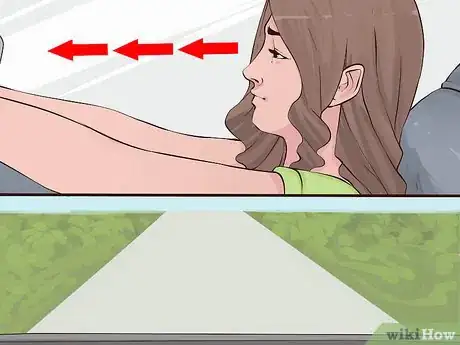
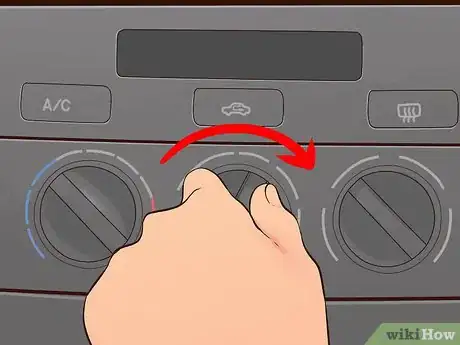
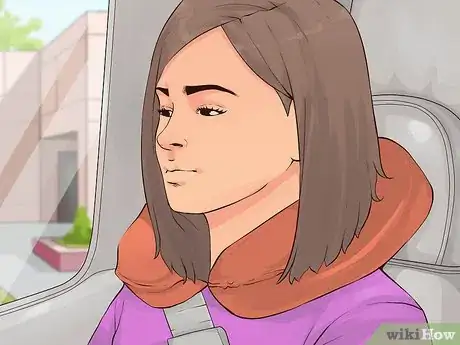
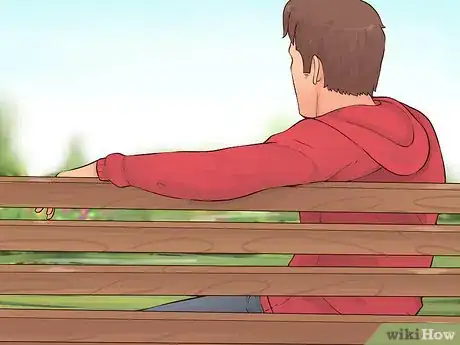
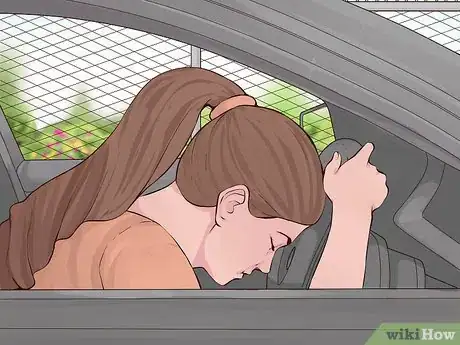
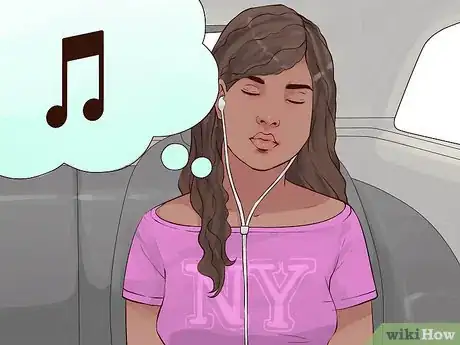
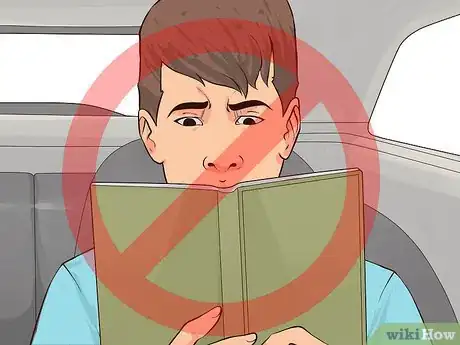
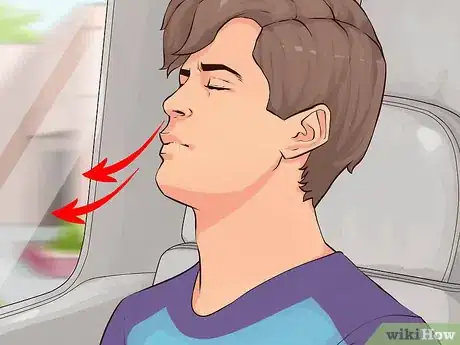
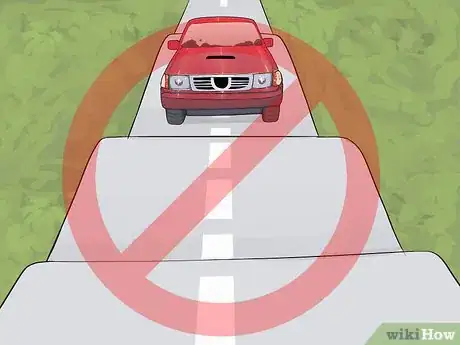

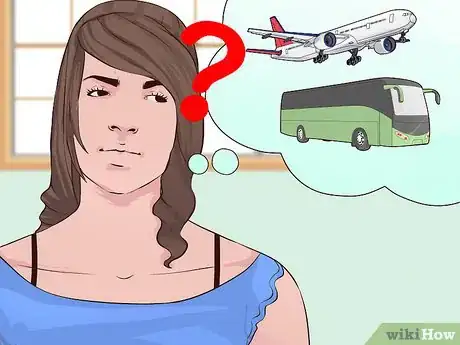
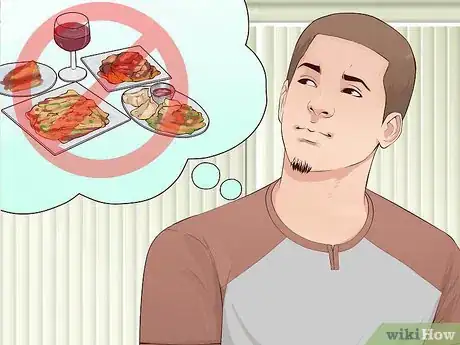
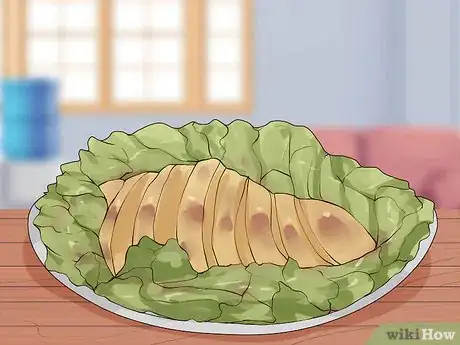
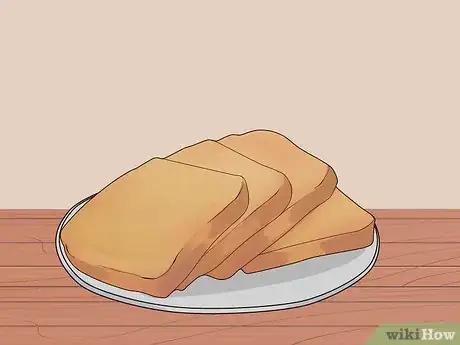
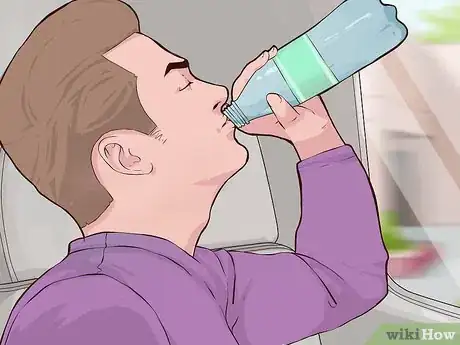
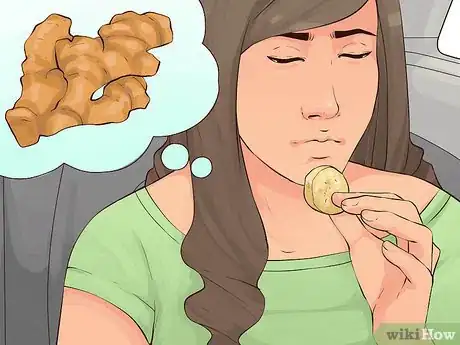
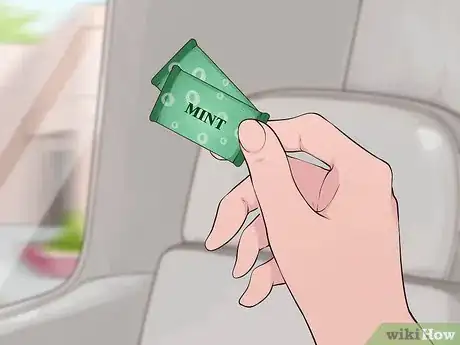
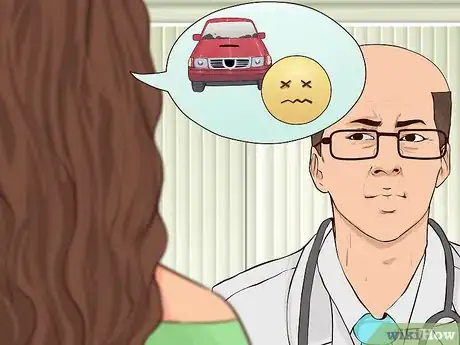
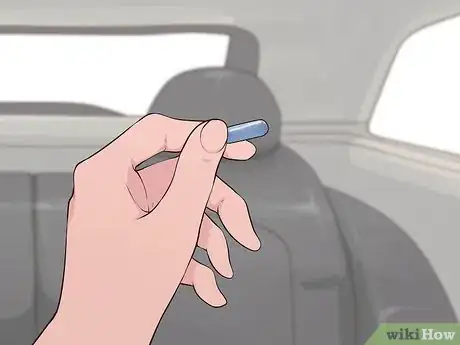
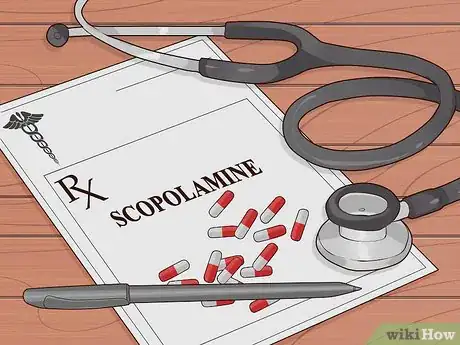






-Step-9-Version-5.webp)
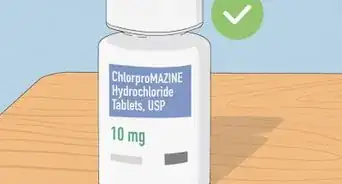
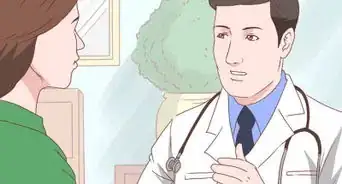
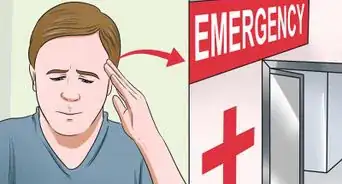
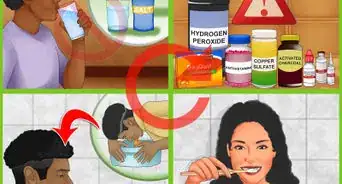
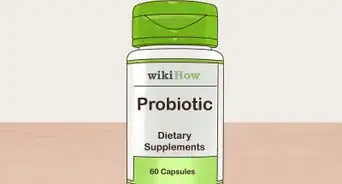
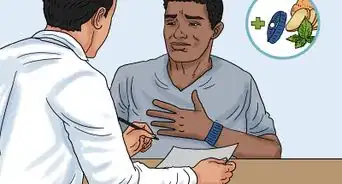












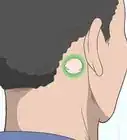
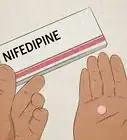




































Medical Disclaimer
The content of this article is not intended to be a substitute for professional medical advice, examination, diagnosis, or treatment. You should always contact your doctor or other qualified healthcare professional before starting, changing, or stopping any kind of health treatment.
Read More...